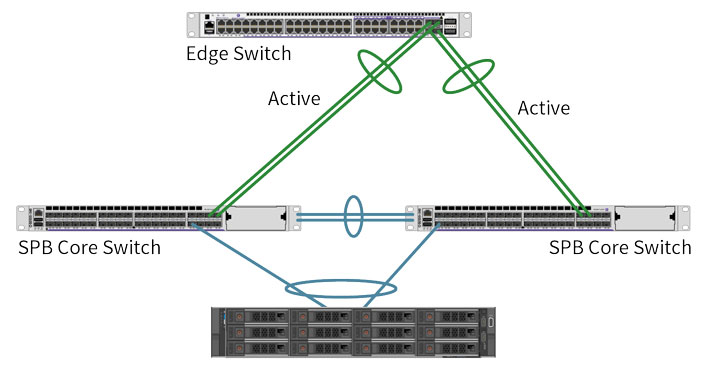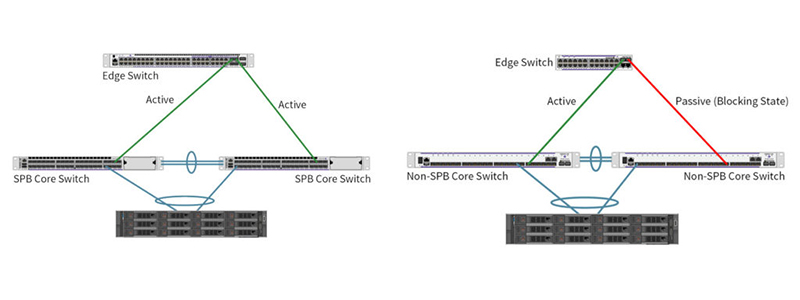
When deploying a network optimized for video surveillance, it is critical to consider the overall availability and performance of the network. With more deployments requiring always-on video, networks need to be designed to support the video data it needs to carry.
There are a wide variety of options to provide a highly available network, but as a best practice, employing IEEE 802.1aq aka shortest path bridging (SPB) offers unrivaled performance and resiliency. Since each video management system (VMS) has its own tolerance to a network disruption, it is critical to plan your network to support your VMS properly.
Traditionally, networks utilize the spanning tree protocol to provide convergence within a network should a link or device fail. During this convergence time, video data will suffer packet loss, leading to dropped frames and potential data loss. This form of p
Compared to other protocols in use, including multiple forms of spanning tree, SPB can significantly improve throughput and convergence time. The ease of integration allows for seamless implementation within preexisting networks and provides a highly available network infrastructure when appropriately configured.

The most substantial benefit of SPB is twofold: scalability of local resources and convergence time in the event of a network device failure. Similar to adding lanes to a highway, aggregating links with an SPB supported network allows for all links to be active and load balancing at all times, increasing the maximum throughput. Similarly, when a link fails, IEEE 802.1aq will enable tens of thousands of video streams to converge in a sub-second window.
In a traditional spanning tree-based network, a network device failure could cause substantial video loss when evaluating both the VMS’s fault tolerance, as well as the time needed to restore a failed link or device. Taking the time to regain video into consideration is critical to determine what an IP video-optimized network needs. While various routing protocols can provide fast convergence, shortest path bridging is a far better solution in terms of its simplicity, in addition to its overall reliability.

